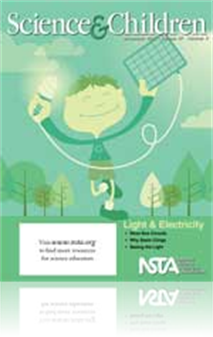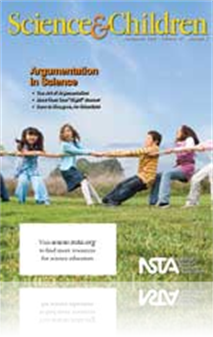All Science and Children resources
Journal Article
Methods and Strategies: The Reflective Assessment Technique
Teachers often rely on student questions, their observations of students at work, and their own intuition to monitor how well students are learning. However, the authors found that teachers learn more about their students when they use the four-step ...
Journal Article
Natural Resources: Winter Secrets
The obvious signs of winter: red noses, colorful scarves, fidgety students. The not-so-obvious? A gall on a branch, red berries, shortening days. This month, Natural Resources focuses on print resources—appropriate for the season for lurking in a l...
Journal Article
Science Shorts: Snowflake Symmetry
Even if you get snow in your area, studying real snowflakes in situ can be challenging, but you can still develop a dynamic, hands- and minds-on exploration that can be conducted year-round. Images of actual snowflakes not only help students better v...
Journal Article
The Early Years: Paths of Light
Exploring light is part of the National Science Education Content Standard B: Physical Science. Introduce reflection when you see children noticing their reflection in mirror or window by asking them what it means. While playing with a mirror, childr...
Journal Article
“I have no energy! Energy is everywhere! Solar energy comes from the Sun. Energy drinks give you energy!” These are the typical responses from sixth-grade students when asked about what they know about energy. Students are often aware that energy...
Journal Article
Science 101: How do the new fluorescent lightbulbs work?
This is a timely question; given that in 2012 incandescent bulbs (the regular lightbulbs you’ve used for many years) won’t meet energy efficiency standards and will be phased out. To address the question, the author will explain how incandescent ...
Journal Article
In this article, the authors present a sequence of activities from a curriculum about light for third and fourth graders that supports students in learning to disagree like scientists. This sequence of activities helps students discuss reasons for th...
Journal Article
Teaching Through Trade Books: Discover Reading
We often gloss over the history of science—the women and men who have made advancements in the area of scientific discovery. These notable individuals are the backbone of our field. This month, we honor these scientists by encouraging children to r...
Journal Article
How can you connect, supplement, and extend students’ firsthand investigations? Look toward your bookshelves for a clue. Books and other textual materials can serve the following roles in support of scientific inquiry: providing context, modeling, ...
Journal Article
Students can’t ask for much more fun than skateboarding during class time. With some additional concept learning, that kind of fun can be incorporated into a debate that encourages students to practice scientific argumentation. With a debate comes ...
Journal Article
Editor’s Note: Arguing Versus Scientific Argumentation
Scientific argumentation is a valid and effective way to involve students in voicing their opinions based on evidence. It helps in the development of scientific thinking and provides opportunities for students to ask more questions. But, just turning...
Journal Article
Argumentation in science involves offering and responding to claims, providing and asking for evidence or justifications, and analyzing those claims to formulate a decision (Gross 1990). The authors’ experience with students, including those who ar...
Journal Article
“The Wheel of Scientific Investigation and Reasoning” (Kramer 1987; Paul and Binker 1992) is a graphic representation of the scientific investigative process. The scientific process is depicted in a wheel rather than in a list because “the proc...



